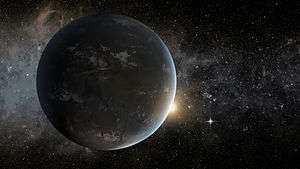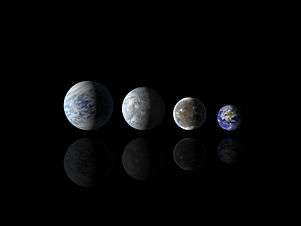(285263) 1998 QE2
|
| |
| Discovery[1] | |
|---|---|
| Discovered by | LINEAR |
| Discovery date | 19 August 1998 |
| Designations | |
| Amor, NEO[2] | |
| Orbital characteristics[2] | |
| Epoch 13 January 2016 (JD 2457400.5) | |
| Uncertainty parameter 0 | |
| Observation arc | 6346 days (17.37 yr) |
| Aphelion | 3.8081 AU (569.68 Gm) (Q) |
| Perihelion | 1.0376 AU (155.22 Gm) (q) |
| 2.4229 AU (362.46 Gm) (a) | |
| Eccentricity | 0.57173 (e) |
| 3.77 yr (1377.5 d) | |
| 252.96° (M) | |
| 0° 15m 40.824s / day (n) | |
| Inclination | 12.859° (i) |
| 250.15° (Ω) | |
| 345.65° (ω) | |
| Known satellites | 1 |
| Earth MOID | 0.0327146 AU (4.89403 Gm) |
| Jupiter MOID | 1.24314 AU (185.971 Gm) |
| Jupiter Tisserand parameter | 3.239 |
| Physical characteristics | |
| Dimensions | 2.75 kilometers (1.71 mi)[3] |
| 4.749 h (0.1979 d) | |
| 0.06 (dark)[3] | |
| 11 to 23.9 | |
| 16.4,[3] 17.3[2] | |
|
| |
(285263) 1998 QE2 is an Amor near-Earth asteroid 2.75 kilometers (1.71 mi) in diameter.[3] It was discovered on August 19, 1998, by the Lincoln Near Earth Asteroid Research (LINEAR) program located near Socorro, New Mexico.[1] 1998 QE2 has an observation arc of 14 years and a well-determined orbit.[2]
Characteristics
The surface of (285263) 1998 QE2 is covered with a sooty substance, suggesting that it might have previously been a comet that experienced a close encounter with the Sun.[4] However, the Tisserand parameter with respect to Jupiter (TJ=3.2) does not make it obvious whether (285263) 1998 QE2 was ever a comet.[3] The asteroid is optically dark with an albedo of 0.06, meaning it absorbs 94% of the light that hits it.[3] The asteroid is covered with craters and is dark, red, and primitive.[5] As an Amor asteroid,[6] the orbit of (285263) 1998 QE2 is entirely beyond Earth's orbit. The Earth minimum orbit intersection distance (E-MOID) with the orbit of the asteroid is 0.035 AU (5,200,000 km; 3,300,000 mi).[2] The asteroid has an orbital period of 3.77 years.[2]
Satellite
Goldstone radar observations on May 29, 2013 discovered that (285263) 1998 QE2 is orbited by a minor-planet moon roughly 600 meters (2,000 ft) in diameter.[7] In radar images, the satellite appears brighter than (285263) 1998 QE2 because it is rotating significantly more slowly, which compresses the radar return of the satellite along the Doppler axis. This makes the satellite appear narrow and bright compared to (285263) 1998 QE2.[8] The satellite orbits the primary every 32 hours with a maximum separation of 6.4 kilometers (4.0 mi).[9] Once the satellite's orbit is well determined, astronomers and astrophysicists will be able to determine the mass and density of (285263) 1998 QE2.
Earth approach
On May 31, 2013, (285263) 1998 QE2 approached within 0.039 AU (5,800,000 km; 3,600,000 mi) (15 lunar distances) of Earth at 20:59 UT (4:59 pm EDT).[6] This was the closest approach the asteroid will make to Earth for at least the next two centuries.[10] It is a very strong radar target for Goldstone from May 30 to June 9 and will be one for Arecibo from June 6 to June 12.[3] At its closest approach the asteroid had an apparent magnitude of 11 and therefore required a small telescope to be seen.[3]
Integrating the orbital solution shows the asteroid passed 0.08 AU (12,000,000 km; 7,400,000 mi) from Earth on June 8, 1975,[6] with an apparent magnitude of about 13.9.[11] The next notable close approach will be May 27, 2221, when the asteroid will pass Earth at a distance of 0.038 AU (5,700,000 km; 3,500,000 mi).[3]
Gallery
-

Orbit of 1998 QE2 on May 31, 2013
-

and June 2, 2013[1]
- ^ Cite error: The named reference
jpldatawas invoked but never defined (see the help page).
References
- 1 2 "MPEC 1998-Q19 : 1998 QE2". IAU Minor Planet Center. 1998-08-22. Retrieved 2013-05-30. (J98Q02E)
- 1 2 3 4 5 6 "JPL Small-Body Database Browser: 285263 (1998 QE2)" (last observation: 2013-05-28; arc: 14.7 years; Uncertainty=0). Jet Propulsion Laboratory. Retrieved 7 April 2016.
- 1 2 3 4 5 6 7 8 9 Dr. Lance A. M. Benner (May 28, 2013). "(285263) 1998 QE2 Goldstone Radar Observations Planning". NASA/JPL Asteroid Radar Research. Retrieved 2013-05-30.
- ↑ Deborah Netburn (May 24, 2013). "Dark, massive asteroid to fly by Earth on May 31". Retrieved May 24, 2013.
- ↑ "Arecibo Radar Sees Asteroid 1998 QE2 and Moon". Astrowatch. 2013-06-15. Retrieved 2013-06-15.
- 1 2 3 "JPL Close-Approach Data: 285263 (1998 QE2)" (last observation: 2013-05-28; arc: 14.7 years; Uncertainty=0). Retrieved 2013-05-30.
- ↑ "NASA Radar Reveals Asteroid Has Its Own Moon". NASA/JPL. May 30, 2013. Retrieved 2013-05-30.
- ↑ Emily Lakdawalla (May 30, 2013). "Say "hi!" to asteroid -- actually, asteroids -- (285263) 1998 QE2". The Planetary Society. Retrieved 2013-05-30.
- ↑ "Radar Movies Highlight Asteroid 1998 QE2 and Its Moon". NASA. 2013-06-06. Retrieved 2013-06-08.
- ↑ "Asteroid 1998 QE2 to Sail Past Earth Nine Times Larger Than Cruise Ship". NASA/JPL Asteroid Radar Research. May 15, 2013. Retrieved 2013-06-01.
- ↑ "(285263) 1998QE2 Ephemerides for 8 June 1975". NEODyS (Near Earth Objects - Dynamic Site). Retrieved 2013-05-30.
External links
- NASA Radar Reveals Asteroid Has Its Own Moon at NASA
- Animation of binary asteroid 1998 QE2 derived from radar data
- Arecibo Radar Sees Asteroid 1998 QE2 and Moon (June 15, 2013)
- (285263) 1998 QE2 at the JPL Small-Body Database
_1998_QE2%2C_Goldstone%2C_May_30%2C_2013.jpg)


